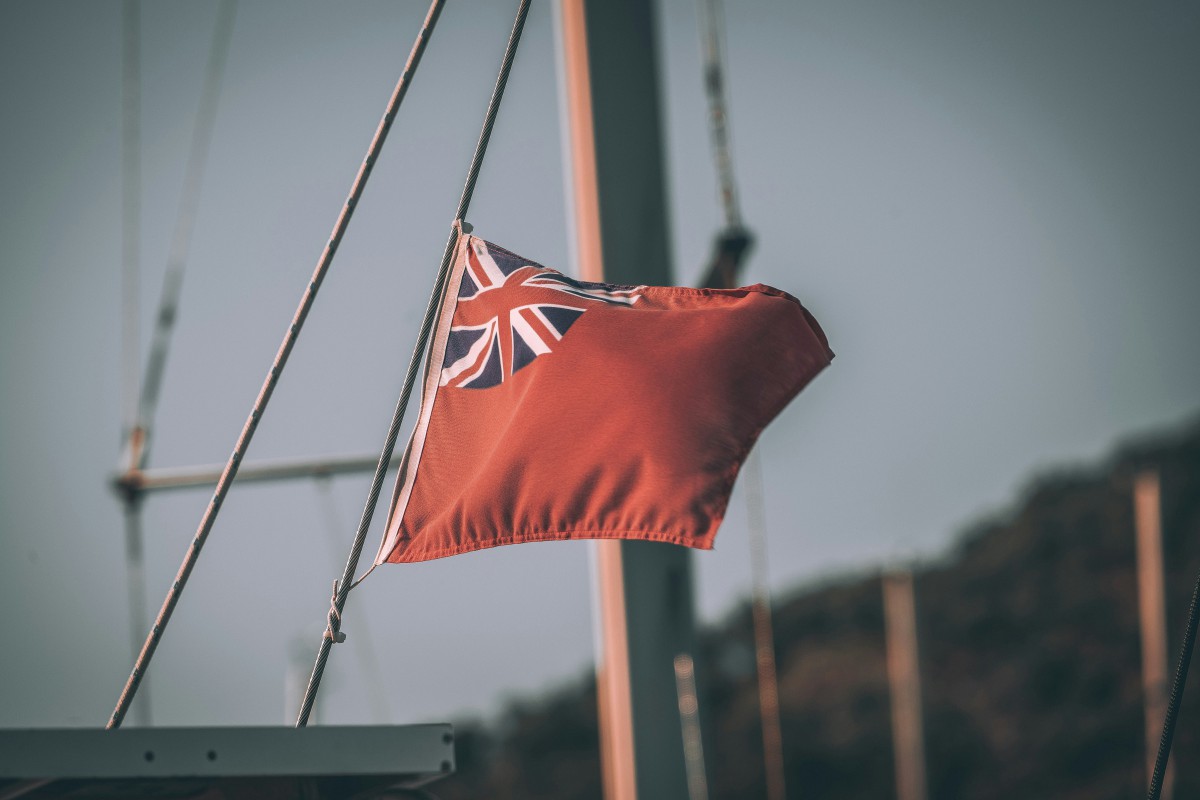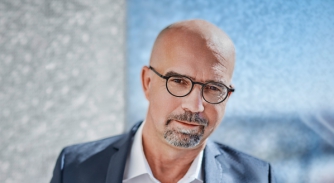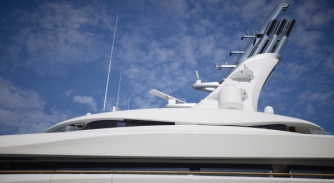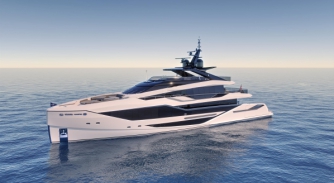British Superyacht joins Seawork as UK marine tech gains momentum
British Superyacht’s Southampton forum highlights the UK’s growing influence in propulsion, AI and regulation ahead of its Seawork debut…

Amongst cups of tea, black cabs, red buses and stiff upper lips, yachting isn’t necessarily the first thing you associate with Britain. But as a nation with such a rich maritime heritage, old Blighty is playing a vital role in shaping the next generation of superyacht technology. Advancements in AI, design and propulsion engineering from the coast, not to mention the hive of activity in London city office blocks, cement the UK's position in the upper echelons of the superyacht ecosystem. And all the reasons why were on display at British Superyachts’ Tech Talks conference last week in Southampton.
The conference opened with confirmation that British Superyacht will become an official feature of the Seawork commercial marine exhibition, taking place from 9–11 June 2026 at Mayflower Park in Southampton. The move formalises a growing relationship between the two events and brings the UK’s high-end yacht sector into direct dialogue with the wider commercial marine industry.
“Incorporating our British Superyacht Tech Talk into the Seawork programme is a game-changer,” said Richard Selby, CEO of British Superyacht. “The sheer volume of commercial expertise and innovation at Seawork is invaluable. By offering a platform dedicated to superyacht technology, we’re ensuring that the world-class talent and capabilities within the British supply chain are brought directly into conversation with the broader marine community.”
Seawork will also introduce a new superyacht category within its annual Innovation Awards, recognising the transfer of advanced materials, propulsion and automation from commercial to luxury applications.
To further facilitate this crossover, British Superyacht has launched Superyacht Connect, a networking and business development initiative that identifies commercial exhibitors with natural relevance to the superyacht sector. Through the Seawork App, participants will be able to arrange meetings with industry professionals for up to a year after the show – effectively transforming a three-day exhibition into a continuous 365-day marketplace.
“Superyacht Connect is the physical and digital realisation of our ‘Stronger Together’ mantra,” added Jo Assael, British Superyacht’s ambassador for technical and regulatory affairs. “It creates a clear pathway for commercial marine excellence to meet the standards of the superyacht world, ensuring that the quality and expertise of our mutual supply chain translate into new opportunities.”
Following the MAIB’s interim report into the capsizing of Bayesian, Houlder’s naval architect, Andy King, offered a sharp technical analysis on the regulatory and design issues at play. He praised the report as “extremely considered, extremely technical and very, very thorough”, but highlighted how current frameworks still fall short in key areas.
King stressed that while the report described Bayesian’s condition as akin to “sailing mode”, she was in fact at anchor with the centreboard raised – technically not even in a seagoing condition. He also drew attention to downflooding angles (points where openings become immersed well before vanishing stability is reached), noting that Bayesian had several below the 40-degree benchmark, though still approved under class.
Calling for proactive action ahead of final conclusions, King urged the industry to re-examine real-world loading, conduct fresh lightweight checks, and ask whether stability booklets truly reflect how yachts operate today. Stability should be intrinsic to the design, not dependent on crew action to recover.
Innovation wasn’t limited to domestic projects. As global leaders shared technical insights, the discussion turned to propulsion and power. Feadship’s Breakthrough has captured headlines worldwide with its cutting-edge technology and pioneering status as the world’s first hydrogen-powered superyacht. The project has captured global attention, not just for its technical audacity but for what Giedo Loeff, Research and Development team lead at Feadship, described as its “scientific value” and the learning it has driven across the shipyard’s teams.
A cornerstone of that innovation was the creation of bespoke hydrogen and fuel-cell systems, including a marine-adapted PowerCell fuel-cell technology debuting aboard Breakthrough. The yacht features cryogenic liquid-hydrogen storage at –253 °C, a dedicated gas-fuel supply system and a direct-current electrical backbone capable of integrating hybrid energy sources such as HVO and paraffinic fuels.
Innovation wasn’t confined to propulsion. Like every other industry, the superyacht sector has been swept up in the AI boom. Bill Edwards of Olenski and Professor Adam Sobey of The Alan Turing Institute showcased how AI-driven yacht design tools are evolving to explore design spaces more efficiently.
In another propulsion development, Derek Munro, CEO of Divergent Yachting, presented NOx Free – a new atomic project working towards nuclear-powered superyachts. The power presentation revealed an exciting breakthrough in maritime technology. Monoroe presented a groundbreaking nuclear reactor designed specifically for marine vessels. With a one-megawatt reactor that's 2.8 metres in diameter and three metres long, its compact size means it can fit into boats above 45 metres.
The ultimate vision, as Munro passionately stated, is to help the industry stop using fossil fuels and start feeding the planet with cleaner, more sustainable energy solutions.
According to Munro, the reactor’s most compelling feature is its extraordinary longevity, essentially allowing a vessel to operate for 10 years without refuelling, potentially extending to 20-25 years depending on usage patterns. Safety was a critical focus, with the team designing a system where “the engineer never, ever touches this part of the system” and instead is monitored remotely with multiple shutdown mechanisms.
It’s an innovative financial approach too. Instead of purchasing the reactor outright, users will lease it and pay for the kilowatt-hours it produces, making the technology more accessible. The system uses advanced supercapacitor graphene batteries that maintain 97 per cent capacity over 20 years, a significant improvement over traditional battery technology.
Regulatory progress is promising, with the team anticipating “verbal approval” (Lloyd’s released their new guidance for nuclear-powered shipping shortly after the presentation) and potential first deployment by 2029. But Munro acknowledged, however, that the biggest challenge remains public perception. And convincing the maritime community that nuclear marine power can be safe, efficient and environmentally responsible is a tough ask.
Innovation wasn’t confined to propulsion. Like every other industry, the superyacht sector has been swept up in the AI boom. Bill Edwards of Olenski and Professor Adam Sobey of The Alan Turing Institute showcased how AI-driven yacht design tools are evolving to explore design spaces more efficiently. Using evolutionary algorithms and spatial reasoning, these systems can generate layout options that complement human creativity, though widespread designer adoption remains an ongoing challenge.
Tom Shaw demonstrated Stingray Marine Tech’s digital twin platform, which creates a virtual replication of a vessel to minimise operational risks and costs. The system can simulate real-time weather and wind data, enhancing navigation, safety and performance insight – essentially bringing predictive analytics to the bridge. Jon Lee of Sentini Marine added that these digital platforms are now key to reducing downtime and improving lifecycle management for large yachts.
From a legal perspective, Charlotte Hill, partner at Pennington Manches Cooper, discussed the rapidly evolving regulatory landscape and its implications for companies adopting AI technology. AI regulation, she explained, requires businesses to establish clear governance, conduct vendor due diligence and develop comprehensive policies aligned with core principles of safety, transparency and fairness. Hill urged companies to start small with pilot projects, stay alert to evolving regulations, and build flexible frameworks that mitigate risk while unlocking AI’s competitive potential.
Regulatory collaboration was a strong closing theme of the conference. During the flag-state panel discussion, representatives emphasised their unified approach to vessel registration and safety. Panellists distinguished their aim to “harmonise our codes between us” rather than create a single international yacht code. The panellists also highlighted their willingness to adapt to new technologies that enhance safety standards, while maintaining a pragmatic approach to regulation. The shared message, in essence, is to enforce robust, internationally agreed standards while remaining open to innovations that improve maritime safety and crew welfare.
As the conference closed, the overarching tone was one of momentum and optimism across the British superyacht sector. Across propulsion, AI and regulation, progress will depend on tighter collaboration between designers, engineers, regulators and data scientists in ensuring Britain’s superyacht industry remains integral to the sector’s next phase of sustainable growth.
NEW: Sign up for SuperyachtNewsweek!
Get the latest weekly news, in-depth reports, intelligence, and strategic insights, delivered directly from The Superyacht Group's editors and market analysts.
Stay at the forefront of the superyacht industry with SuperyachtNewsweek
Click here to become part of The Superyacht Group community, and join us in our mission to make this industry accessible to all, and prosperous for the long-term. We are offering access to the superyacht industry’s most comprehensive and longstanding archive of business-critical information, as well as a comprehensive, real-time superyacht fleet database, for just £10 per month, because we are One Industry with One Mission. Sign up here.
Related news

All change for the yachting industry
How the evolution of the yachting landscape has created a much more complex but highly competent and professional environment for today’s mariners
Opinion


Project 821 – A Breakthrough
The first green-hydrogen-powered superyacht, built by Feadship, is a breakthrough in terms of green technology and exterior design
Fleet

Sunseeker reveals plans for superyacht division
At this year’s boot Düsseldorf, UK shipyard Sunseeker International announced plans for a new division focusing on superyachts
Fleet
Related news
All change for the yachting industry
2 months ago
Let’s not overreact to nuclear
5 months ago
Project 821 – A Breakthrough
9 months ago
Sunseeker reveals plans for superyacht division
11 months ago
NEW: Sign up for
SuperyachtNewsweek!
Get the latest weekly news, in-depth reports, intelligence, and strategic insights, delivered directly from The Superyacht Group's editors and market analysts.
Stay at the forefront of the superyacht industry with SuperyachtNewsweek



